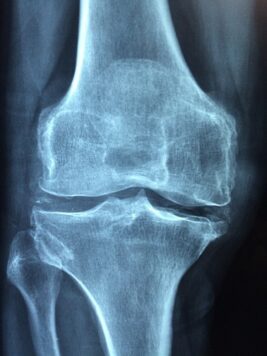Fullerenols have garnered significant scientific interest in nano-technology and biomedicine. A detailed understanding of their interactions with proteins is fundamentally important for their biomedical applications. Human islet amyloid polypeptide (hIAPP) is an intrinsically disordered protein and its aggregation is associated with type 2 diabetes. Here, we investigated the nano-bio-interactions of fullerenol with hIAPP and focused on the effect of C60(OH)24 on hIAPP aggregation by replica-exchange molecular dynamic simulations. Our simulations show that isolated hIAPP dimers transiently populated amyloid-precursor (β-hairpin) containing β-sheet structure, whereas C60(OH)24 completely suppressed this fibril-prone structure, thus inhibiting hIAPP aggregation. The simulation-predicted inhibitory effect of fullerenols was validated by atom force microscopy and thioflavin T fluorescence experiments. We find C60(OH)24 binds to hIAPP via hydrogen bonding interactions with polar residues T9, Q10, N14, N21, N22, N31, N35 and T36 as well as the collective van der Waals and hydrogen-bonding interaction with Y37. Molecular dynamic simulations show that C60(OH)24 destabilized the hIAPP protofibril by mostly binding to the 20SNNFGAILSS29 amyloid core region. This study not only helps to understand the mechanisms involved in hIAPP aggregation and amyloid inhibition, but also provides new clues for the development of therapeutic candidates against type 2 diabetes.
0 items in your cart
Help center
Do you have any questions?
What would you like help with today? You can quickly take care of most things
here, or
connect with us when needed.
Can not find your answer? Please contact us
Send a question
Please try to describe your question as accurately as possible. The most
complete information will help us promptly respond to your message.
Question sent successfully
Thank you for contacting us, we will answer your question on example@gmail.com within 72 hours!







